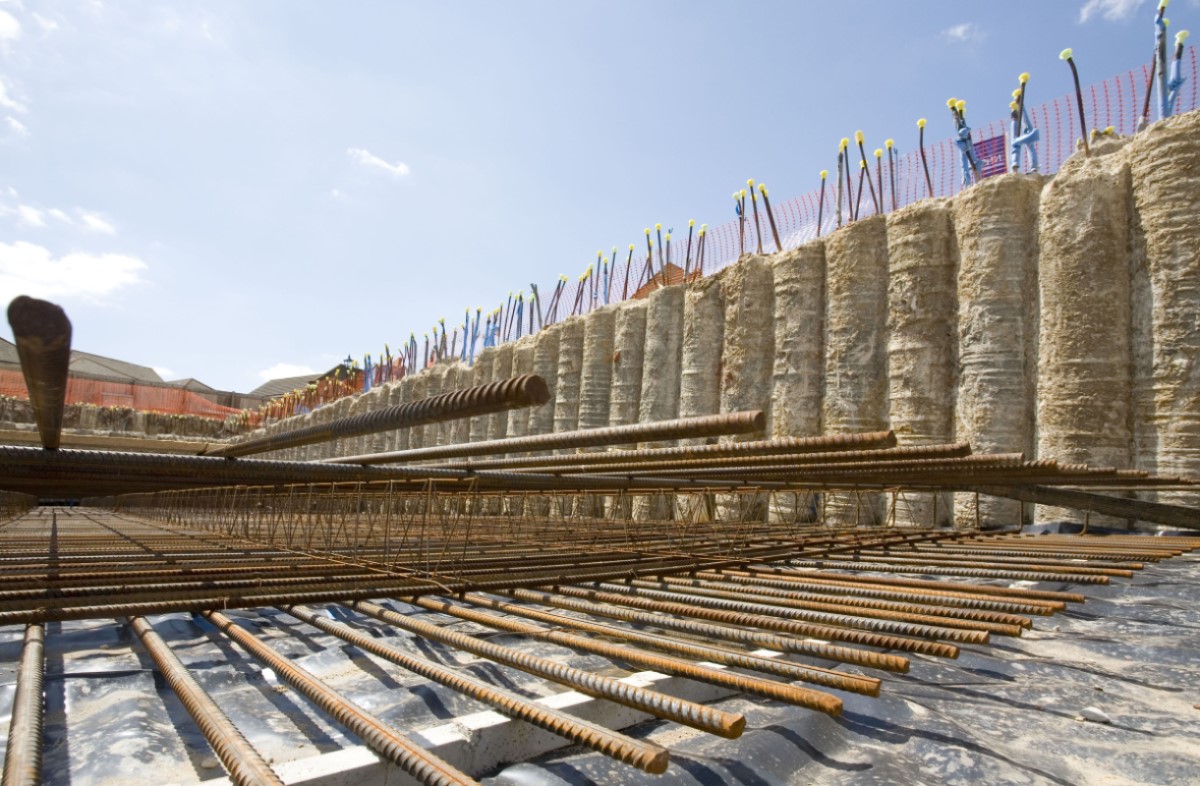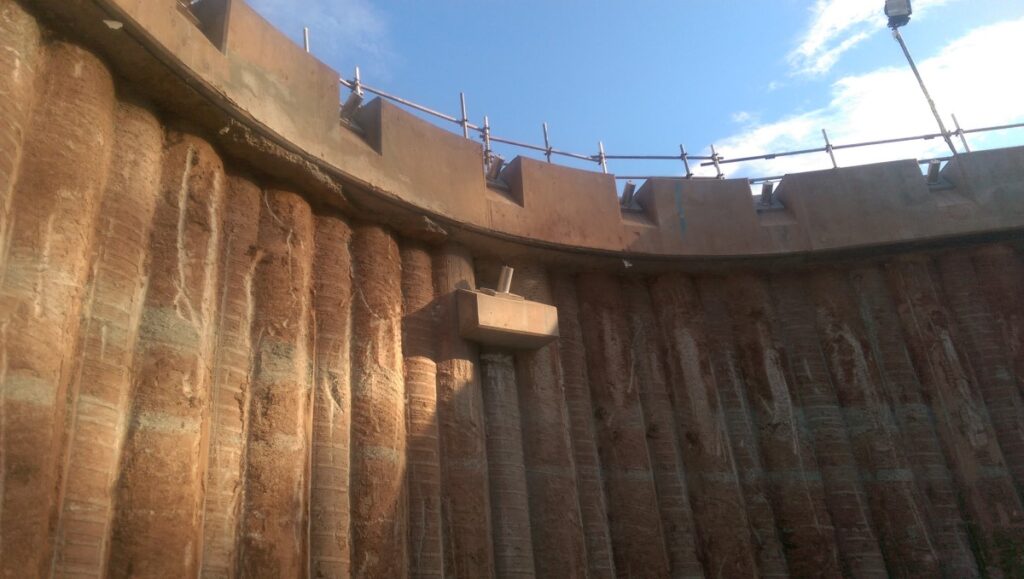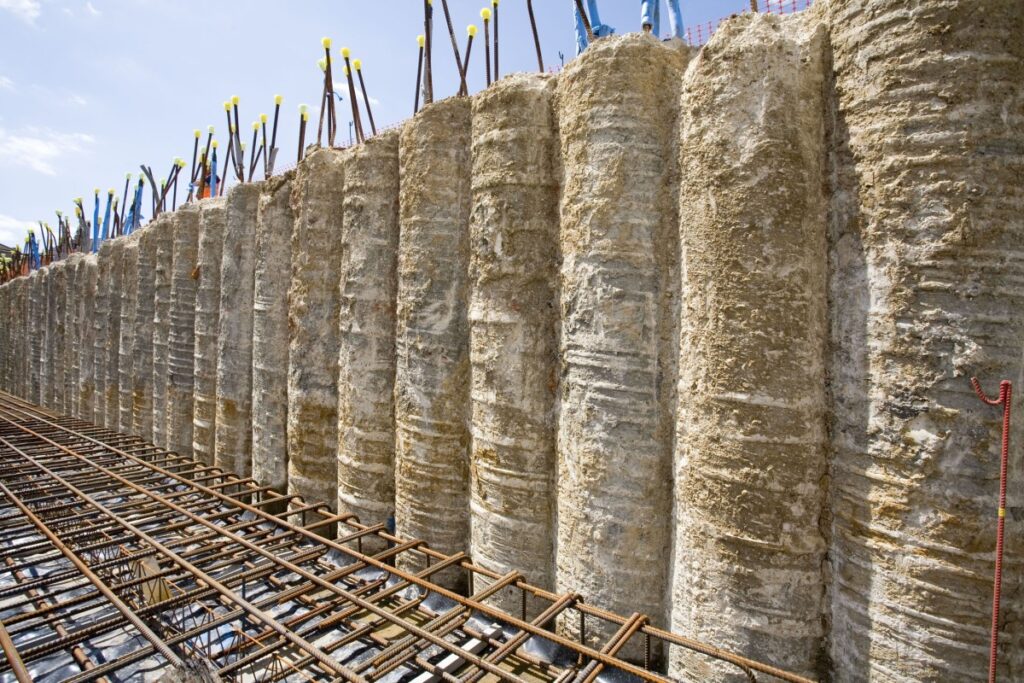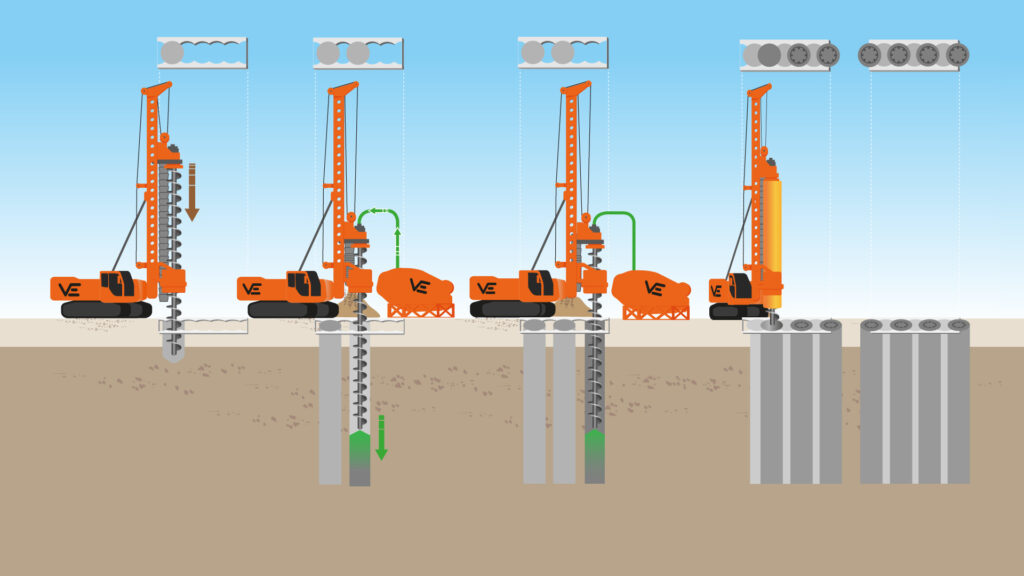A secant piled wall is formed by constructing alternative interlocking primary and secondary bored piles as a retaining structure providing load bearing walls and deep foundations for engineering construction.
What is a secant piled wall?
A secant pile wall is a bored pile retaining wall formed by the installation of interlocking primary and secondary piles. This creates a continuous retaining structure, to support excavation and to mitigate the ingress of water.
Secant walls are relatively flexible in shape and design, offering benefits over diaphragm walls. They are also able to provide higher capacities (including lateral) than are typically possible with sheet pile walls.
There are three types of Primary piles as identified below:
Soft: Typically, a bentonite / grout mix.
Firm: Usually a C8/10 or P280 concrete
Hard: Structural Concrete
For Soft/Firm piles they are considered non-structural and are there to provide the water proofing only. Hard Primary piles are structural elements that often contain concrete and a reinforcing cage, as well as providing the water proofing element.
Secondary piles are the main structural element and are always classed as “Hard”. These are formed using structural concrete and a steel reinforcement cage.
These walls can be formed by a number of bored methodologies, including CFA, SFA, Bored Cast-in-Place and Cased CFA (to limited depths). Cased CFA is generally only used for secant walls, providing better verticality tolerance than CFA, whilst maintaining higher productions than Bored Cast-in-Place.
Key capabilities:
- Rig loadings: 6–140 tonnes
- Diameter:
- 300–1,200mm to depth of 40m, diameter dependent, using CFA techniques
- 300 – 2,100mm to a depth of 65m using rotary bored piling techniques



